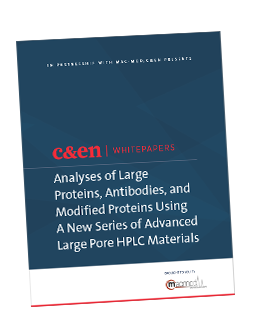
As pharmaceutical companies have shifted their development focus to large-molecule biotherapeutics, the ability to separate intact monoclonal antibodies and antibody-drug conjugates for characterization purposes has become extremely important. To enable this characterization work, new LC particle technology has been required. The large 1000 Ã… pore size of the superficially porous particles used for RPLC described herein enables full access to the bonded phase surface for larger biomolecules. This improved access to the bonded surface produces narrower peak widths and enhanced resolution of minor mAb variants, and can lead to increased retention under most analysis conditions. Together, with new mass spectrometric instrumentation and software, wide-pore superficially porous particle LC columns will greatly aid in the advancement of large-molecule biopharmaceutical characterization and development. The recent expansion of the very large pore superficially porous particle family to include three bonded phases (C4, C18, Diphenyl) permits very high resolution separations of lower abundance protein variants, permitting structure analysis and quantification of these variants.